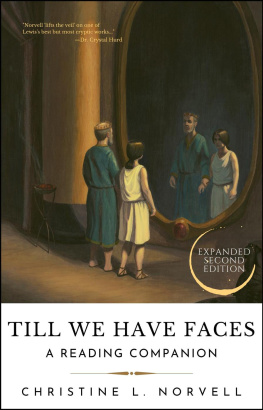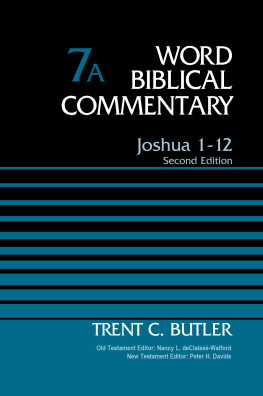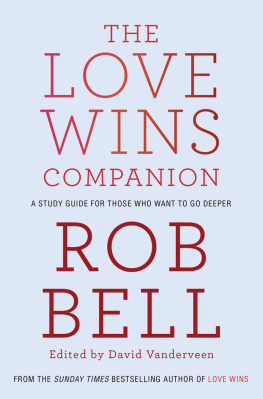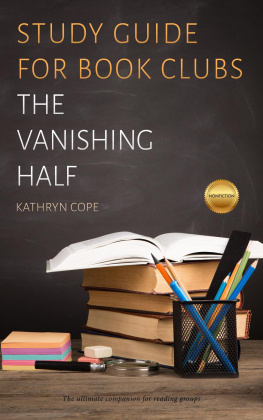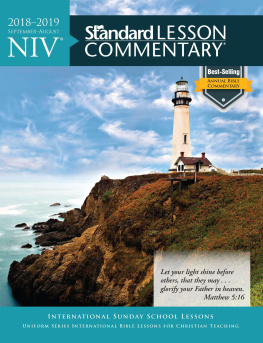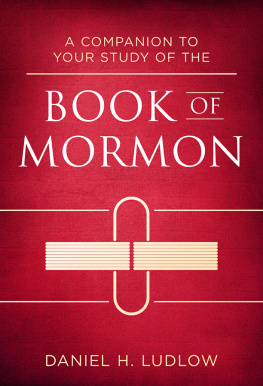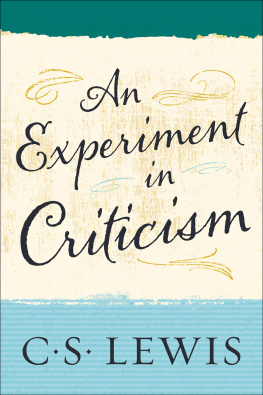TILL WE HAVE FACES:
A MYTH RETOLD
by
C.S. Lewis
A Reading Companion
an any day companion for an everyday reader
Christine L. Norvell
Copyright 2020 Christine L. Norvell
TILL WE HAVE FACES: A MYTH RETOLD A Reading Companion
By Christine L. Norvell
All rights reserved.
No part of this book may be used or reproduced by any means, graphic, electronic, or mechanical, including photocopying, recording, taping or by any information storage retrieval system without the written permission of the author except in the case of brief quotations embodied in critical articles and reviews.
Unless otherwise noted, scripture taken from the Holy Bible, English Standard Version Copyright 2001 by Crossway, from the Complete Jewish Bible Copyright 1998 by David H. Stern, Lederer Messianic Publications.
Cover art by Dan Rempel at DanRempelIllustration.com .
To my most precious family of five.
To my heavenly Father for loving me wholly, for listening to me, for speaking to me in daily bread portions.
Till We Have Faces is one of Lewiss richest books, but also one of his most challenging. Christine Norvell does readers a great service by offering what is essentially a college course on the novel between two covers. Well researched and smoothly written, Norvells study guide offers valuable insights in every chapter and encourages readers to actively participate in the act of informed interpretation. Dr. David C. Downing, Co-Director of the Marion E. Wade Center at Wheaton College and author of five books on C. S. Lewis, including the novel Looking for the King
In writing and now revising her deeply insightful and very helpful companion, Christine L. Norvell helps readers understand why he thought so, offering excellent guidance to anyone interested in that maddening, magnificent novel. Andrew Lazo, scholar and speaker on C. S. Lewis, editor and transcriber of Early Prose Joy, Lewis's previously-unknown autobiography, and expert on Till We Have Faces
Christine Novell's illuminating guide on Till We Have Faces discusses and untangles many of the enigmatic aspects of this magnificent novel. Norvell herself "lifts the veil" on one of Lewis's best, but most cryptic, works and illustrates the holy purpose beneath the fictional text. Dr. Crystal Hurd, author of Thirty Days with C.S Lewis: A Womens Devotional and Reviews Editor for Sehnsucht: The C.S. Lewis Journal
Kudos to Christine Norvell for providing an accessible reading companion that opens up the novel to a wide array of readers. Her analysis and questions zero in on key themes, characters, and symbols in a way that draws out Lewiss meaning rather than imposing her own. Dr. Louis Markos, Professor in English and Scholar in Residence, Houston Baptist University; author of Restoring Beauty: The Good, the True, and the Beautiful in the Writings of C. S. Lewis
With a clear vision and a capable hand, Christine Norvell's Reading Companion is a compelling resource inviting readers to draw the mythic beauty of this transformational story into their lives. Dr. Brenton D.G. Dickieson, Lecturer and Preceptor, Signum University
Norvell includes an explanatory chapter for each of the chapters in Lewis book. Each ends with several thought-provoking and open-ended questions helpful for personal reflection as well as group discussion. Her use of scholarship, primary and secondary, is ample and helpful. I recommend this book for classes, book clubs and church groups. It offers scholarship that is both wise and clarifying. Dr. Nancy Enright, Professor of English, Director of University Core, Seton Hall University, and author of Community: A Reader for Writers and articles in Logos , Commonweal , and The Chesterton Review
To my most precious family of five.
To my heavenly Father for loving me wholly,
for listening to me, for speaking to me in daily bread portions.
W here I am ever a student , I thank Dr. Brenton Dickieson and Andrew Lazo for graciously adding to my knowledge of all things Lewis and for providing needed clarity to the argument of my Introduction. Both men gave generously of their time and experience to help me, an understudy.
With gratitude to the many scholars and thinkers who have gone before me, most especially Peter J. Schakel for his spiritual and academic insights that shaped my thoughts and my classroom discussions.
Without the laboratory of the classroom, my studies, thoughts, and questions would be incomplete. Thank you to Regent Preparatory School for preparing me to write.
To construct plausible and moving other worlds
you must draw on the only real other world we know,
that of the spirit. C.S. Lewis, On Stories
HOW WE READ
O ur perspectives do affect the meaning of what we read. If one of my students were to say the fairy tale Beauty and the Beast was about the influence of family, another student might insist that the tale was about how people are monsters. Neither is wrong, but neither is exclusive. Meaning comes to us in many ways.
No reader doubts that our own life experiences create a lens through which we see the world and the words we read. This is the primary way meaning arrives. C.S. Lewis says, Each of us by nature sees the whole world from one point of view with a perspective and a selectiveness peculiar to himself. [1] Our limitation is natural, and it is helpful to be aware of it.
How then do we approach C.S. Lewiss final novel, Till We Have Faces ? Many critics at the time complained that it was too different from his previous fiction, that the story was too dark or ambiguous. T.H. White, for example, said the final section was full of metaphysical mumbo-jumbo. [2] Charles Rolo wrote that A single reading left some of the novels meanings obscure. [3] The story invites extremes, and that is our challenge in finding meaning. One approach is to draw from the pool of literary criticism as we consider the types of perspectives readers might share.
Experts who think about the way we read literature also think about different kinds of perspectives. With the Reader-Response theory of literary criticism, for example, the meaning of the story rests with us, the readers. Meaning comes to us as we interact with the text.
Next page
